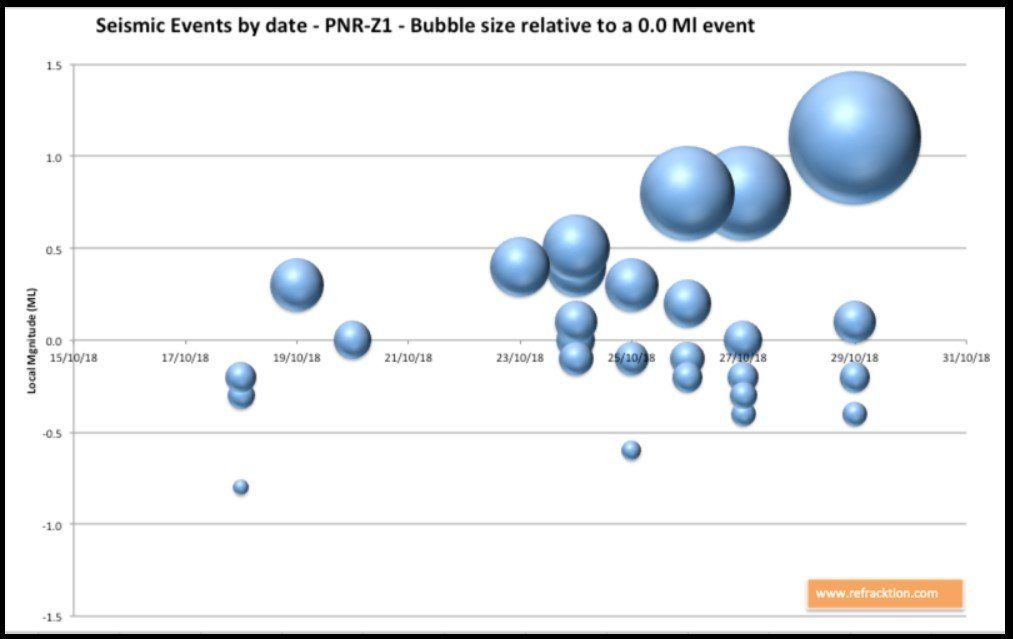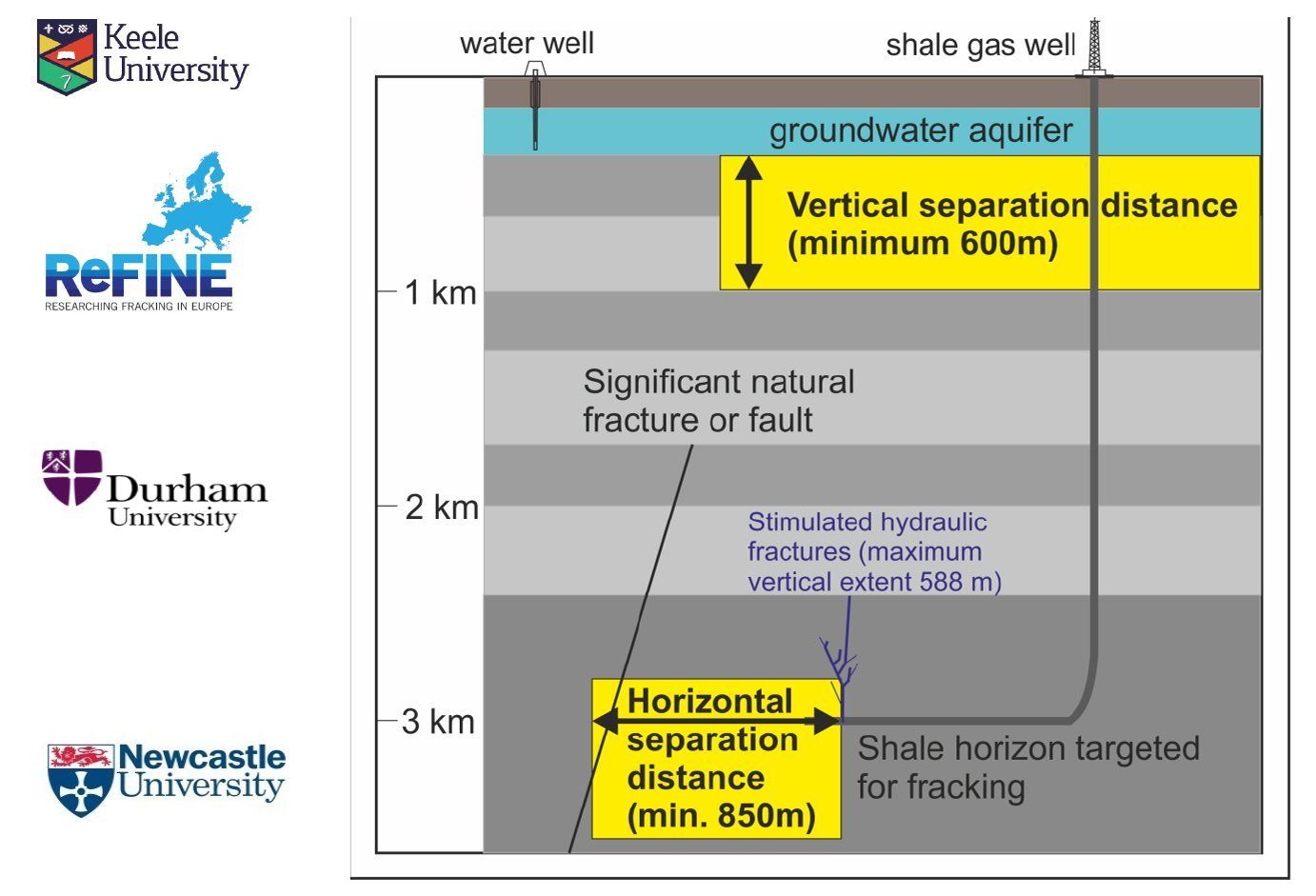Earthquakes and Fracking in Mining Areas
In the UK, Earthquakes from fracking are rare mainly due to only two High Volume High Pressure Fracks have been done to date. Cuadrilla now have a 100% rate of causing earthquakes and have had to stop fracking because earth tremors on both occasions with a 1.1 magnitude
(ML) tremor happened while the company was fracking the well at Preston New Road near Blackpool in 2018, the tremor was classed as a red event under the government’s traffic light system regulations
set up after the well-known example happening at Preese Hall in Lancashire in 2010, as described in the
New Scientist

Report prompts calls for immediate moratorium until full extent of the risk can be properly assessed
Fracking on up to half of the land licensed by the Government for shale-gas operations could trigger earthquakes, according to a leading seismologist.
Former advisor to No 10, Professor Peter Styles, says hydraulic fracturing in former coal mining areas increases the probability of earthquakes on faults that have already been subject to movement through mining.
As the Government announced plans to speed up fracking developments by fast-tracking private companies' planning applications, Professor Styles has called for more rigorous checks to identify the dangers in the coalfield areas.

In his new report, ‘Fracking and Historic Coal Mining: their relationship and should they coincide?’ Professor Styles describes the ‘serious earthquake risk’ posed by fracking in former coalfield areas, because ‘induced seismicity’ is ‘dramatically enhanced’ in a significant proportion of land designated for fracking operations.
The report was launched in Parliament in May 2018.
Former coalfields already have a risk of earthquakes. Fracking is likely to enhance the risk of induced seismicity in those areas.
Professor Styles calls on the Secretary of State for Communities and Local Government, The Rt Hon James Brokenshire MP, to immediately adopt his best practice recommendations that planning applications for ANY fracking site include all available, high-resolution and carefully mapped data.
He is insistent that the Government should immediately implement recommended safety steps that include:
· A 500-metre buffer zone between former mine workings and current and future energy extraction technologies (based on 2004 recommendations)
· A 850-metre buffer zone between fracking and any significant natural fractures or faults (based on 2015 and 2018 recommendations)
He adds that all recommendations should be incorporated into the National Planning Policy Framework, with reference to all applications to frack.
Professor Styles, Emeritus Professor in Applied and Environmental Geophysics at Keele University and Past-President of the Geological Society, also called into question the industry's technical capability to identify faults or fractures likely to lead to prohibited seismic events in ALL licenced areas.
He says: “Unfortunately the physics of it means you cannot see those faults with the (survey) waves that you put into the earth.
“To date it does not appear that any proper industry or government due diligence has taken place with regards to fault lines mapped.”
In the case of coalfield areas, he adds: “We have forgotten about mining. Mining has not forgotten about us.”
The report highlights a potentially dangerous fault line within ten metres of the proposed fracking borehole at Harthill, just south of Sheffield, which plastics manufacturer INEOS, owned by Britain’s richest man Jim Ratcliffe, propose to drill.
Professor Styles questions the viability of fracking in the UK saying: “It would be prudent of the Government to reduce the estimates of exploitable onshore frackable gas by half. “We are risking our energy security if we proceed without assessing all the data.”
Baroness Lynne Featherstone, Liberal Democrats spokesperson on fracking, who is hosting the event, said: “This report asks some serious questions of the Government and the fracking industry. Ministers must take heed and listen to the growing weight of evidence on fracking and, at the bare minimum, implement a moratorium on fracking in coal mining areas and review fracking across the UK.”
Re-injection of the enormous quantities of toxic waste water produced by fracking is now widely accepted as the cause for a huge increase in earthquakes in states such as Ohio and Oklahoma.
Oklahoma had one earthquake a year up to 2007, when fracking started in the state. Now there are more than eight hundred a year.
Read these reports in Scientific American
and Live Science
for more details.
In the UK the current plan for disposing of fracking waste water, which returns to the surface contaminated with chemicals, hydrocarbons, heavy metals and radioactive materials, is to treat it at designated treatment plants. However, in a fully developed fracking industry billions of gallons of water needs to be disposed of every week. There are very few water treatment plants in the UK – and doubt as to whether they will actually be able to clean the toxic waste water produced from fracking wells at all. So if this industry is to grow in this country, it is very likely that re-injection of waste water will be the only viable option for disposal. Given the UK’s fractured and unpredictable geology, this may well result in similar environmental impacts that are being felt across the USA from re-injection.
Copyright © All Rights Reserved.
